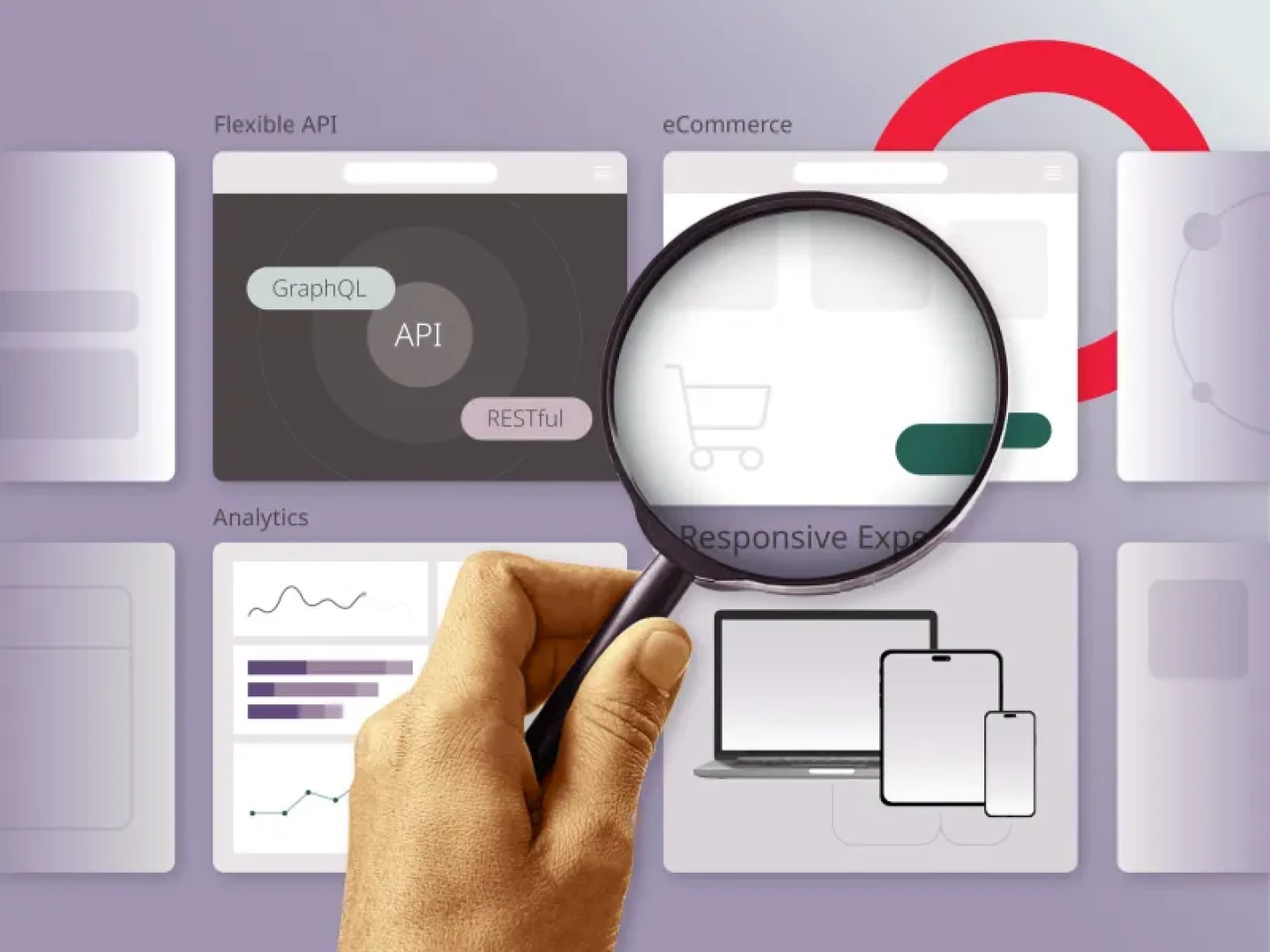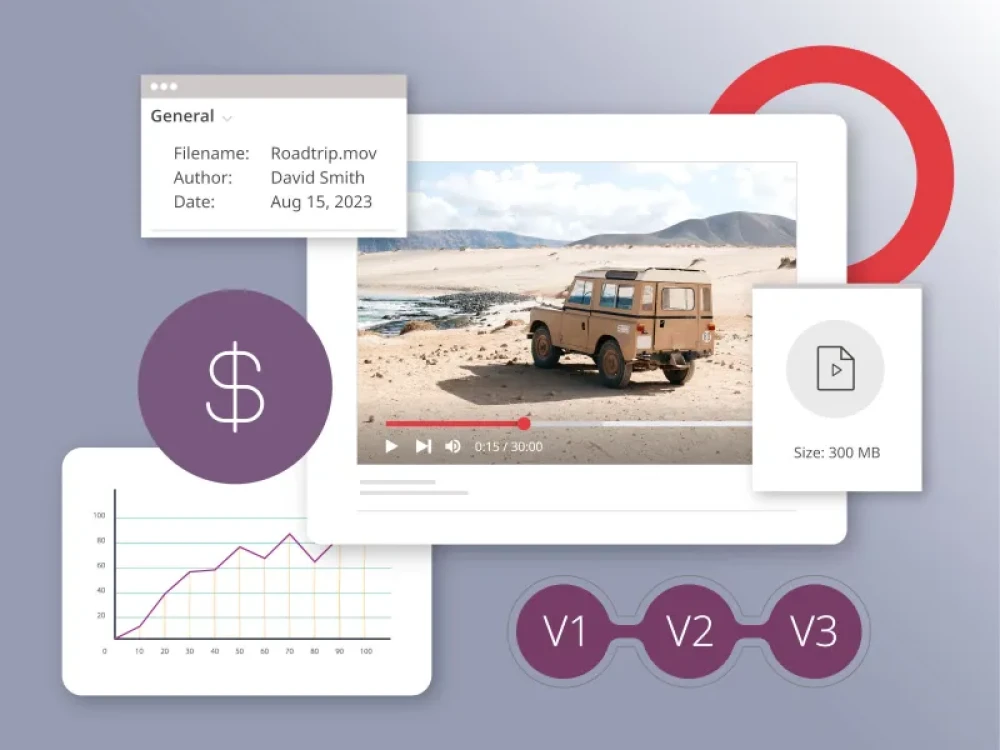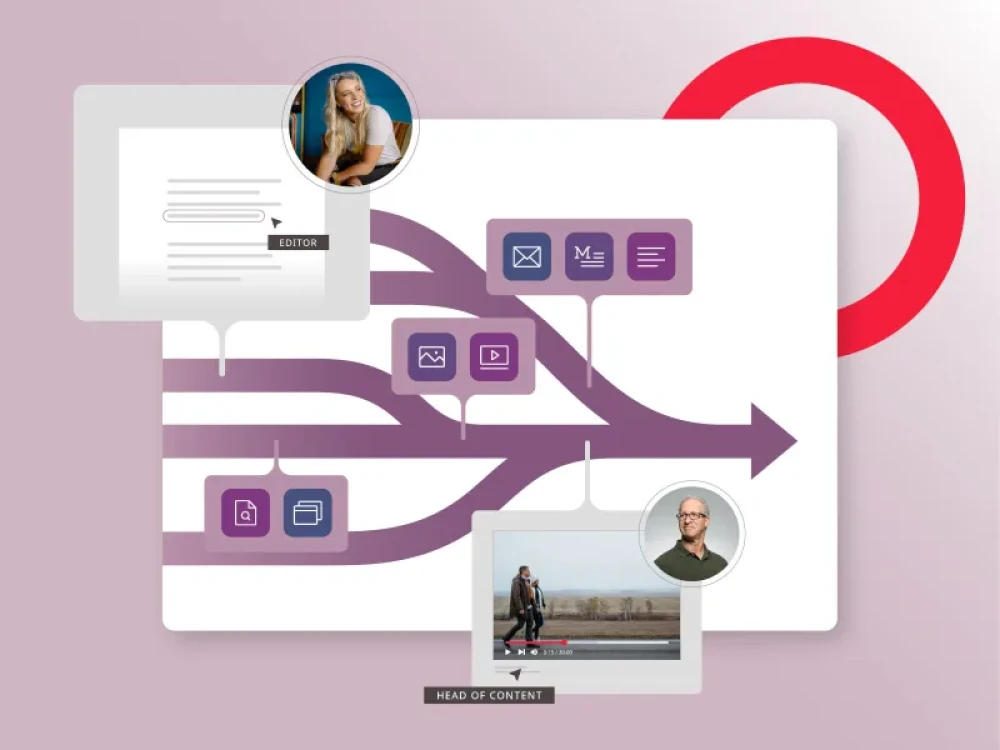Selecting the right digital asset management (DAM) system isn’t something for businesses to look over — it’s a crucial step in enhancing organizational workflows and achieving overall business success. As you navigate your options, you should be taking a strategic approach, emphasizing the importance of aligning a system with your organizational goals.
Criteria for selecting a DAM system
When you’re in the process of choosing a DAM system, it’s essential to establish clear criteria that align with your organization’s needs. The right DAM system can significantly impact your workflows, efficiency and overall business success. Here are some key criteria to consider when evaluating DAM solutions:
- Asset types: Identify the types of digital assets you’ll be managing. Some DAM systems specialize in specific types of assets, such as images, videos, or documents. Ensure the chosen system supports your asset diversity.
- Scalability: Consider your organization’s growth trajectory. A scalable DAM system can accommodate your evolving needs without major disruptions or costly migrations.
- User-friendliness: Evaluate the user interface and overall ease of use. A user-friendly DAM system can reduce training time and increase user adoption.
- Integration: Determine how well the DAM system integrates with your existing tools and software, such as content management systems (CMS), marketing automation platforms, or creative software.
- Metadata and search capabilities: Robust metadata tagging and powerful search functionality are crucial for quick asset retrieval. Ensure the DAM system offers efficient ways to organize and find assets.
- Security and access control: Data security is paramount. Look for a DAM system that provides comprehensive access control, encryption and data backup features.
- Customization: Your DAM system should be adaptable to your unique requirements. Customization options can help tailor the system to your specific workflows and branding.
- Cost: Consider your budget and the total cost of ownership. This includes not only the initial purchase but also ongoing maintenance and support fees.
- Customer support: Research the quality of customer support provided by the DAM vendor. Responsive support can be crucial when facing technical issues or questions.
Comparing top DAM systems in the market
The DAM market is flooded with options, each with its own set of features and capabilities. To aid your decision-making process, we’ll perform a detailed comparison of some of the leading DAM systems available. This comprehensive analysis will help you gain a deeper understanding of the strengths and weaknesses of each option.
- Adobe Experience Manager Assets: Adobe’s DAM solution is known for its integration with Adobe Creative Cloud. It offers powerful tools for organizing, editing and distributing assets seamlessly.
- Widen Collective: Widen is praised for its user-friendly interface and robust metadata capabilities. It provides scalable solutions for businesses of all sizes.
- Bynder: Bynder offers a highly customizable DAM platform, making it suitable for organizations with specific branding and workflow requirements.
- Canto: Canto’s DAM system focuses on simplicity and ease of use. It’s an excellent choice for organizations seeking a straightforward yet effective solution.
- Brandfolder: Brandfolder specializes in brand management, making it an ideal choice for companies looking to maintain strict brand consistency.
Each of these DAM systems has its unique strengths, and the choice ultimately depends on your organization’s specific needs and priorities.
Customization and scalability in DAM solutions
No two businesses are identical, and your DAM system should be able to adapt to your unique demands. Customization and scalability are crucial factors to consider:
- Customization: A DAM system should be tailored to your workflows and branding. Customizable metadata fields, user interfaces and workflows ensure that the system aligns perfectly with your organization’s needs.
- Scalability: As your business grows, so will your digital asset library. A scalable DAM system can grow with you, accommodating an increasing number of assets, users and complex workflows without major disruptions.
User reviews and expert opinions
Real-world experiences and expert insights provide valuable perspectives when choosing a DAM system. We’ll gather user reviews and opinions from industry experts to give you a well-rounded view of how different DAM solutions perform in practice.
User reviews provide insights into the everyday use of DAM systems. They reveal the strengths and weaknesses that users have encountered during their implementation and use. Consider reaching out to businesses that have already adopted the DAM systems you’re interested in to gather firsthand feedback.
Industry experts often conduct in-depth evaluations of DAM solutions. These experts examine aspects such as user interface design, scalability, integration capabilities and overall performance. Their insights can help you gain a more comprehensive understanding of the systems you’re considering.
Conclusion: Making an informed decision
In conclusion, selecting the right DAM system is a pivotal step in optimizing your digital asset management processes. By considering clear criteria, comparing top DAM systems, evaluating customization and scalability and gathering user reviews and expert opinions, you’ll be well-prepared to make an informed DAM decision that aligns with your organization’s goals and sets the stage for efficient digital asset management.
As you embark on this journey, remember that choosing the right DAM system is not a one-size-fits-all endeavor. Your decision should be a reflection of your unique needs and objectives. Armed with the knowledge from this buyer’s guide, you’ll be equipped to make a DAM decision that propels your organization toward digital asset management success.






